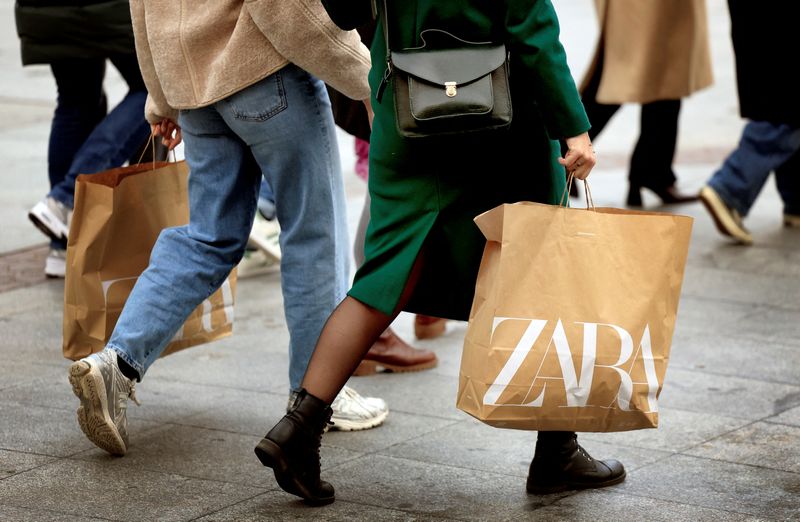By Helen Reid and Inti Landauro
MADRID (Reuters) -Zara owner Inditex missed expectations for first-quarter sales and early summer trading on Wednesday, as tariff fallout complicated the fast-fashion retailer’s efforts to maintain strong growth.
Concerns about resurgent inflation and an economic slowdown triggered by U.S. President Donald Trump’s erratic tariff rollout have already dampened shopping enthusiasm in the United States and other major consumer markets.
The weaker-than-expected numbers, which sent Inditex’s shares down 4.6% on Wednesday, offer a first glimpse of the impact of global trade tensions on the fast-fashion industry ahead of the second-quarter earnings season.
The tariff environment is difficult to predict, but Inditex is well-placed to weather it, Gorka Garcia-Tapia, the Spanish company’s head of investor relations, said in an investor call.
“We have such a global presence, and therefore we have a lot of experience over the last few decades with regards to managing changes in tariff regimes,” he said, adding that Inditex’s diversified sales and sourcing give it flexibility.
“We have that focus on proximity sourcing. I think that all that, with regards to the U.S., really helps us out.”
Inditex reported a slower start to its summer sales, with currency-adjusted revenue growth of 6% from May 1 to June 9, compared to analysts’ expectations of 7.3%, and down from 12% growth in the same period a year ago.
Revenues for the first quarter ending April 30 were 8.27 billion euros ($9.44 billion), falling short of analysts’ average estimate of 8.36 billion euros, according to an LSEG poll.
Net income increased 0.8% in the quarter, to 1.3 billion euros. The company expects its growth margin to remain stable in 2025, Garcia-Tapia said.
‘SOLID’ PERFORMANCE
Inditex did not provide an explanation for the weaker sales growth. In a statement, it called its performance “solid”, having labelled it “very robust” at its previous results announcement in March, when annual sales were up 10.5%.
“We need to take a step back and look at mid single-digit growth as actually being quite good in this environment,” said Bernstein analyst William Woods.
Inditex’s competitors have also experienced a sluggish spring. H&M’s sales have struggled, growing by just 1% in March compared to 4% in the same period a year earlier. Its December-February revenue grew by 2%, below analyst forecasts. H&M will report second-quarter results on June 26.
Rainy weather in Inditex’s home market Spain, which accounts for 15% of its global sales, also likely hurt the company’s performance, according to Bernstein analysts.






